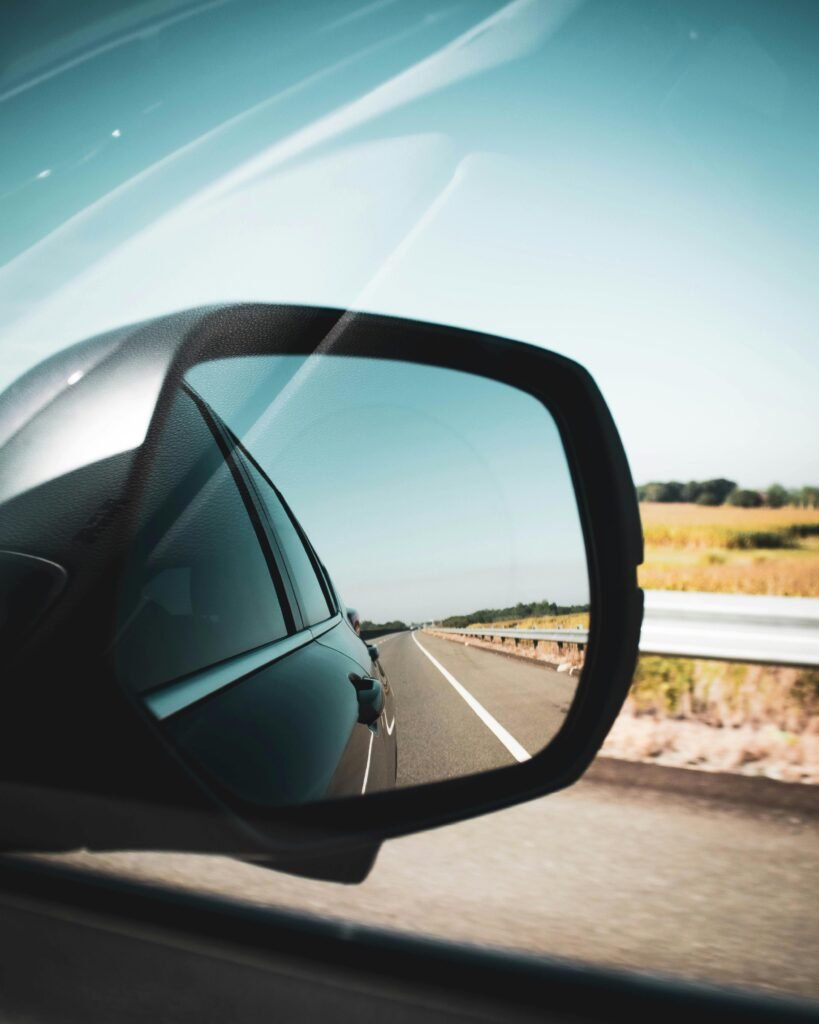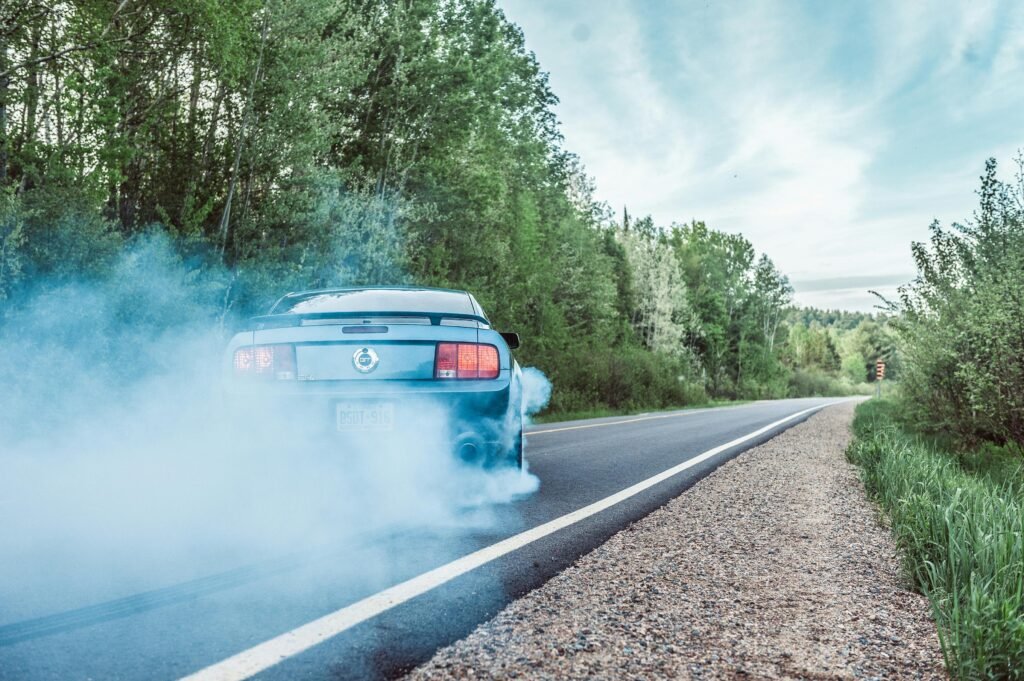The Essentials of Motorway Etiquette: Tailgating and Traffic Flow
Alright, let’s talk about a classic motorway myth: that the speed limit sign is some sort of speed suggestion. It’s amazing how, once people hit the motorway, “70 mph” starts looking more like a polite recommendation rather than, you know, the law.
Then there’s the art of lane discipline, which some drivers find to be as fantastical as Bigfoot.
I’m here to explain it and give you some tips on road etiquette that, if followed, could prevent you from becoming someone’s worst enemy.
Whether you’re the one tailgating, the one being tailgated, or that mysterious driver who thinks the middle lane is your own personal travel lane—stick around. I promise there’s something here for everyone.
It’s a speed limit, not a speed target. I have actual POV examples of tailgating, and you will definitely see those, but there’s a discussion to be had first. We have to start with a little discussion about lanes on the motorway. The leftmost lane on the motorway is the travel lane.
Once, in front of me on the motorway, an unknown Volkswagen Golf had no idea what the hell it was doing because it was just sitting in an overtaking lane while not overtaking anybody.
This is the same on a three-lane motorway, four-lane motorway, or even a six-lane motorway. The only reason for the multiple lanes is to overtake the one in front. That’s a very important point when we talk about tailgating because, if you’re not following that logic, you will get tailgated. That Volkswagen Golf will get tailgated.
Although the speed limit is 70 mph, there is something called the flow of traffic. If there is someone in the fast lane doing 77 mph, that Volkswagen Golf will be in their way. Now, are they within their right to do 77 mph?
Probably not. But nonetheless, they are doing it, and that Volkswagen Golf is in their way, so it will get tailgated.
Now, when we talk about reducing your speed below the speed limit, what this Škoda Fabia in front of me is doing is absolutely perfect. It’s staying in the travel lane, in the leftmost lane, to allow people to overtake.
Maybe it just wants to go 65 mph. Maybe it’s on an economic run, or it’s about to run out of petrol. So now we’ve got motorway etiquette out of the way.
Not all tailgating is the same. Some people are super aggressive and scary, while others are just gently getting closer to give a signal that you should probably get out of the way—and those are two very different things.
It can be a useful way to convey a message and get someone to do something they should already be doing.
But I have to stress: doing it aggressively, getting ridiculously close to the back of someone, and just generally being a jerk is dangerous and doesn’t benefit anybody.

I’m going to give you an example now of what is really not ideal. I apologize to anybody behind me on this road, but you’re just going to have to put up with it. The BMW is definitely tailgating me.
If I do 66 miles an hour in the fast lane, I’m going to frustrate the hell out of this man. Similarly, if I probably did 70 mph, the BMW will just get closer and closer to me in the rearview mirror.
This is just the reality of everyday and real driving: he wants to go faster, and I’m stopping him. I’m going to get out of the way because I feel really bad. Now, he wants to go a lot faster, and to be fair, that’s absolutely fine. I shouldn’t be preventing him from doing the speed he wants to do.
I could get all high and mighty about how, “Oh well, I’m going the speed limit; I’m allowed to be here.” No. If the travel lane is open, you should be using it to allow the people in the overtaking lane to overtake. Rightly or wrongly, they may be speeding, but that is the purpose of this type of road’s design—to allow them to do that.
Again, you don’t know their situation. They may be on their way to the hospital because their wife is giving birth; there could be any number of situations that mean they want to speed. Continuing to block them because you’re doing the speed limit and “allowed” to be there is a very, very bad idea.
The BMW driver tailgating me? He’d think he was being very aggressive, and later, he’d tell his friends, “Oh, I was tailgated by this horrible driver who filled up my entire rearview mirror.” I don’t think there was anything wrong with what that guy did; I think he was just trying to convey the message: “Please move over.”
Now, let me give you an example of what is not okay. The Chevy Colorado truck is behind me in the slow lane, and it’s far too close, even though I’m doing 70 mph. Why doesn’t he just go around me?
This is one of those situations where this guy is just a poor driver, and in his mind, that following distance is absolutely acceptable. He doesn’t think he’s tailgating; he just thinks he’s driving normally.
But he needs to realize that stopping that 2.5-ton truck will take a little while, so he should probably be a bit further back.
One of the biggest issues is people who say things like, “It’s a speed limit, not a speed target.” I absolutely dislike that saying. If the situation is safe—if it’s not torrential rain, pitch black with no lights, or there’s not a million cars of traffic or some kids crossing the street—then you should probably be doing the speed limit. The speed limit is set so that even a 1960s car with ancient brakes can safely do it; your Honda CR-V can definitely do it too.
Single-track roads are where this stuff gets really egregious. If it’s a 50 mph road, there is no reason not to do 50 down this road. It’s perfectly safe.
If I were hesitant and doing 40 mph, somebody would catch up behind me, and it would frustrate them. Similarly, on local roads: this is a 40 mph zone, but if I decide I want to be “a little safer” and do 30 or 35 mph, that car behind me will catch up and get frustrated. You can see it happening already.
That’s probably not really safe. The truck behind me on the motorway was at about the same following distance, and now we’re in a 30 mph zone. If I decide to do 26 mph, that car’s going to catch up. Once again, you can literally see it getting closer. Just don’t do this—it’s not good.
My friend consistently does 26 mph on a 30 mph road every time. When my buddy and I go for a drive together, we end up frustrating people because there’s always a white van man trying to get to his next job on a Sunday morning, and my friend is doing 26 in a 30 in a sporty car.
It’s just incredibly frustrating, and I don’t blame the people behind us who get annoyed, attempt risky overtakes, or tailgate my friend. It’s not okay; it’s not appropriate. Just drive the speed limit when there’s no reason not to.
Try driving through a town without doing the speed limit. The locals will let you know that is not okay. They’re just trying to zip to the shops five minutes away, and you’re here doing 27 in a 30. That’s going to frustrate them—it’s not okay. Doing 26 in a 30? What are you doing?
If somebody in your hometown is not driving at the appropriate speed, you’re going to get frustrated. That’s normal.
So, there you have it—our little motorway manifesto. Speed limits, lane discipline, and why being that guy in the overtaking lane without a clue is a fast track to making enemies.
Let’s keep the roads civil, avoid frustrating the “white van men” just trying to get on with their day, and remember that sometimes, the best way to get where you’re going is to just get out of the way.
Whether you’re flying down the road at “flow of traffic” speed or sticking to 70, remember: there’s enough room for all of us out here—as long as everyone knows where not to be! Safe driving, folks.


